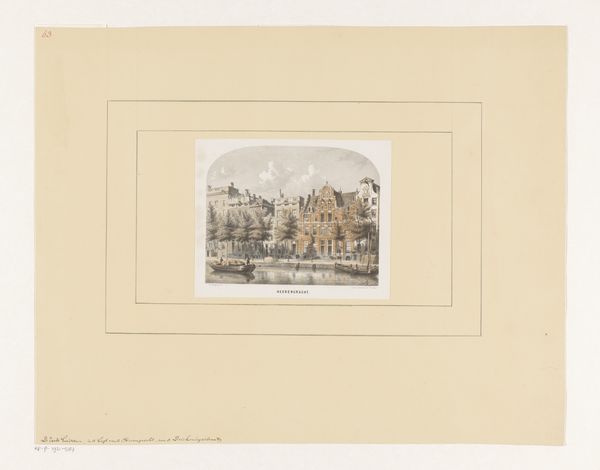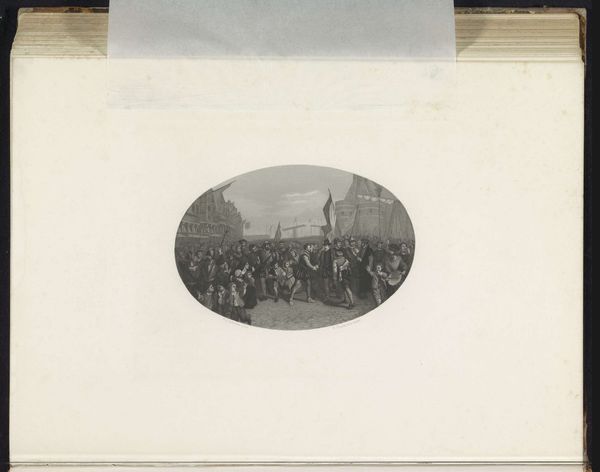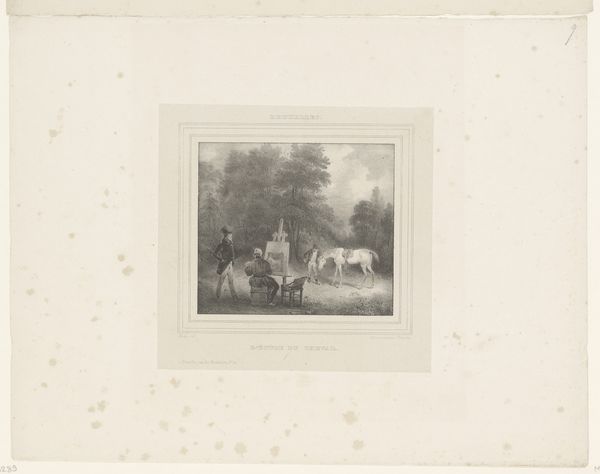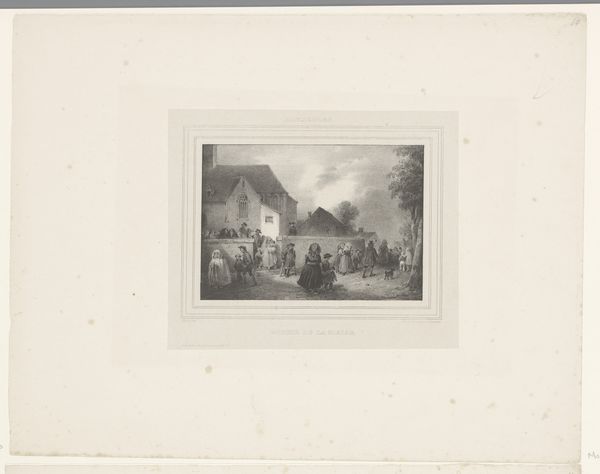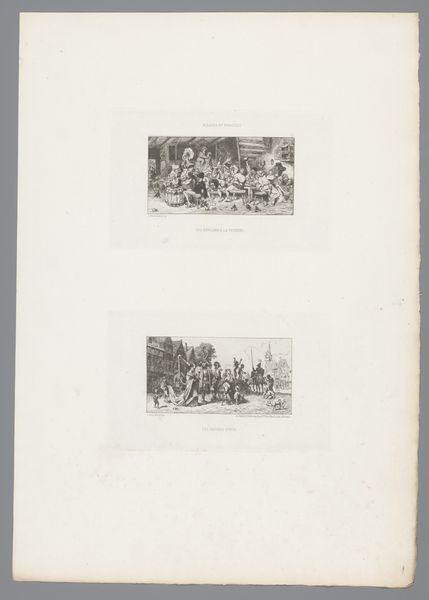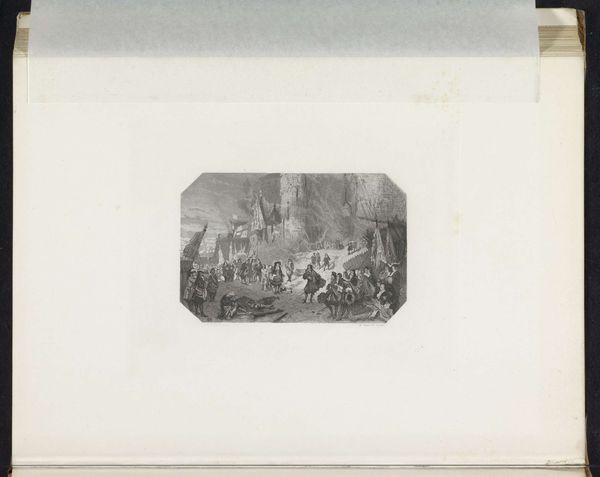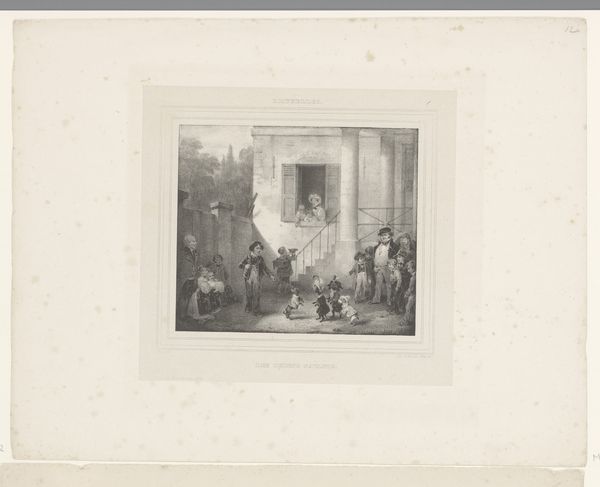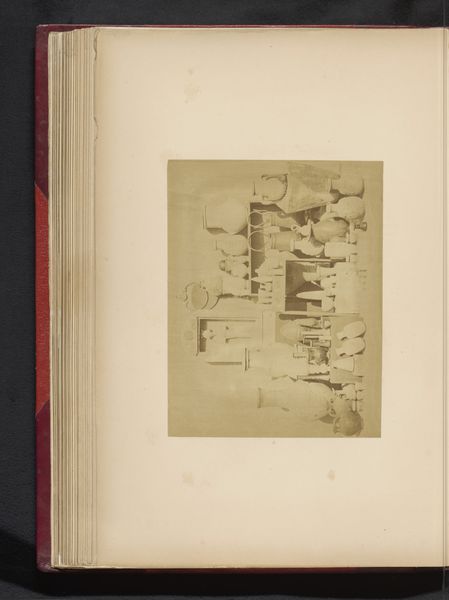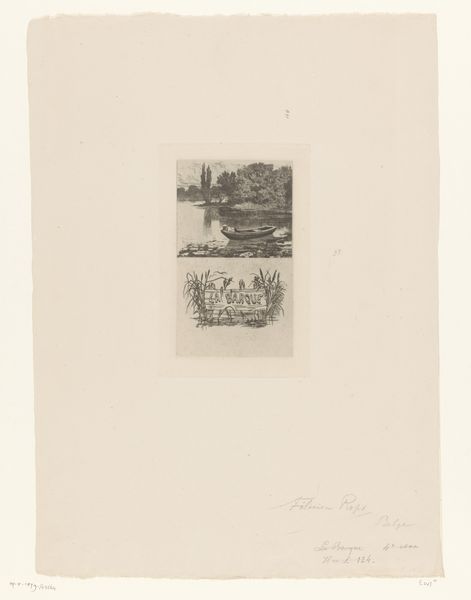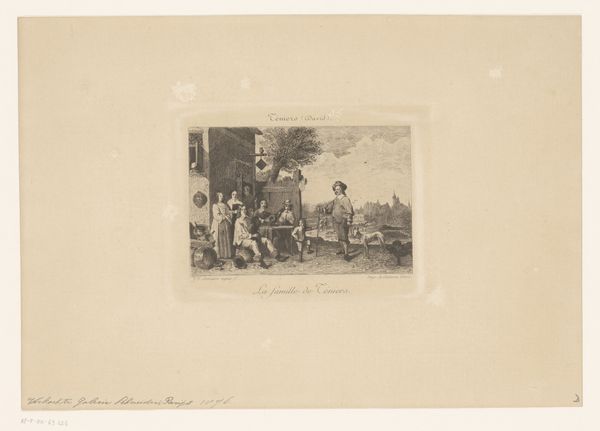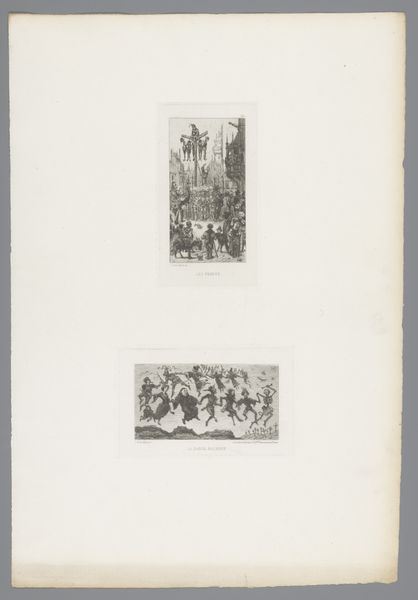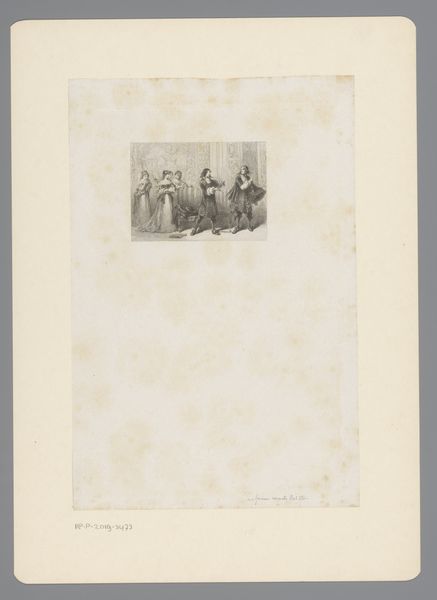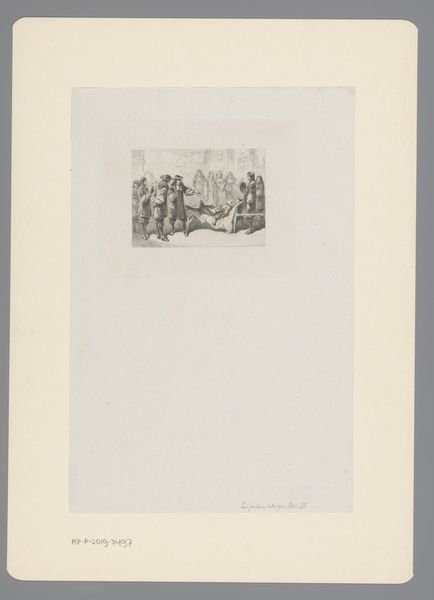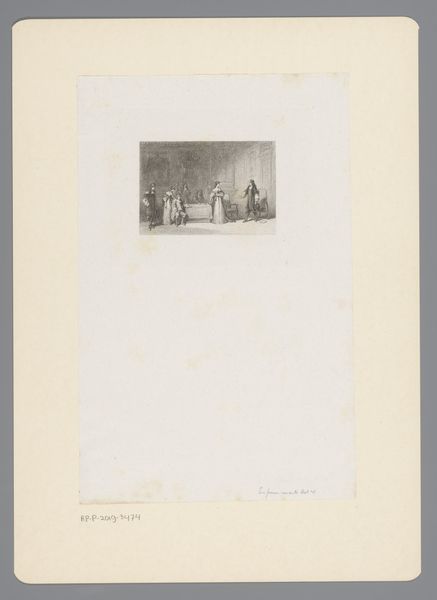
print, engraving
# print
#
romanticism
#
cityscape
#
genre-painting
#
engraving
Dimensions: height 141 mm, width 150 mm
Copyright: Rijks Museum: Open Domain
Curator: We are looking at "Kermis op een dorpsplein," or "Fair in a Village Square," a print made around 1825 by Jules David. The work can be found here at the Rijksmuseum. Editor: My immediate impression is that this print captures a really bustling sense of community. It’s chaotic yet intimate. Curator: This bustling quality aligns with the Romantic era’s fascination with the everyday lives of ordinary people. Scenes like these, capturing a sense of national identity through celebrations and traditions, were gaining popularity at the time. Editor: Definitely! The kermis itself is a potent symbol of community, joy, and even escapism from the daily grind. But I’m also drawn to the composition: the elevated stage, almost like a secular pulpit, places the performer at the symbolic center, suggesting spectacle is a type of sermon or performance for the masses. Curator: It's true that prints like these had a very important function beyond just documenting such scenes. The fair would have reinforced societal structures. Observe the implied audience on the left. Perhaps, judging from their clothing, some are richer members of society spectating on the laboring classes who occupy the kermis's main arena. Editor: I also see something subtly subversive in the carnivalesque atmosphere. Kermis, traditionally, suspends ordinary rules and allows a topsy-turvy vision of the world, if only temporarily. That disruption of hierarchy is palpable here. Curator: That element of social commentary is present, and the fair historically was an event where criticisms or frustrations against authority would find voice. Editor: Well, examining David's rendering with such an understanding deepens my appreciation of the historical and societal roles of fairs in popular culture. It also makes you ponder on contemporary spaces and events, from music festivals to protest marches, as symbolic descendants of such communal assemblies. Curator: Absolutely. Examining the art through this lens, from Romantic celebration to popular assembly, encourages us to engage with the layers of meaning interwoven with the historical conditions in which the print emerged.
Comments
No comments
Be the first to comment and join the conversation on the ultimate creative platform.
